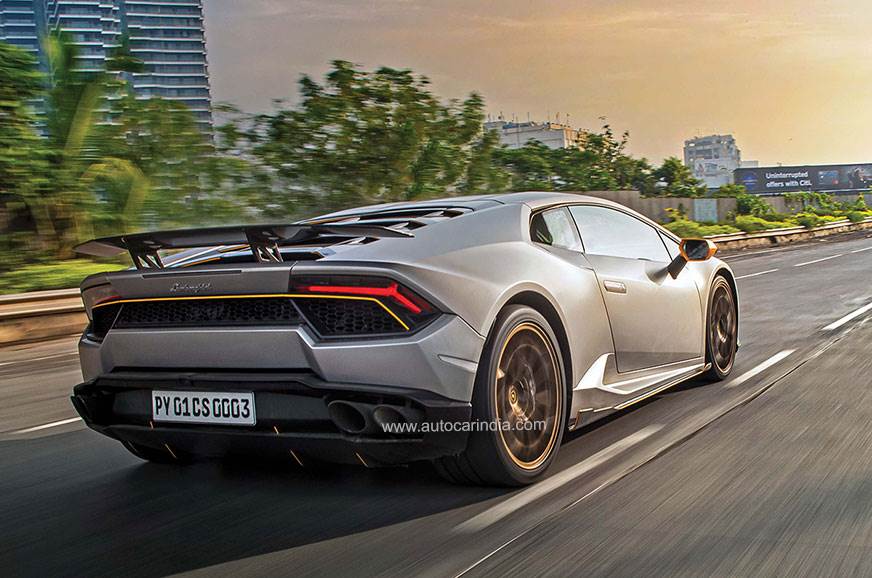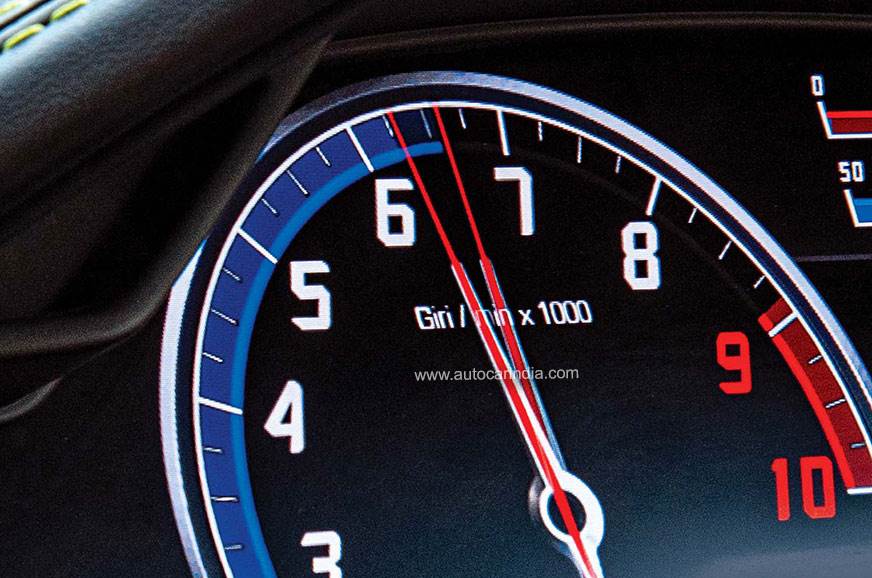
This car’s V10 engine makes a claimed 900hp. NINE HUNDRED! Not seven, not eight ... but nine hundred horsepower. And here, on this car, all of it goes to the rear wheels. Now normally, a similarly configured all-wheel-drive Huracán, with 900 or so horses, would have approximately 225hp going down to each of its four wheels.
This rear-wheel-drive-only example, however, gets roughly 450hp sent to each rear wheel. And that, friends, is more than a Bugatti Chiron. Yeah, it is. Do the math.

Initially, however, this seems like a normal everyday Huracán. Tap on the throttle and responses are relaxed and relatively easy. In fact, truth be told, it feels more laid back than a regular Huracán. This makes it relatively easy to pedal in traffic. And buses, trucks, cows, pedestrians, broken roads and speed breakers, it deals with them all – quite easily. The only clue that something evil lurks underneath is the presence of some deep bass emanating from down below and a high-frequency turbine whine layered on top.

As I delve deeper into the powerband, all analytical thoughts are rudely swept away. Past 3,500rpm, I feel the car sucking in great gobs of air, filling its lungs and spooling up, much in the same way a 777’s engines gather speed... before letting loose a devastating torrent of thrust. Only here, it happens twice as fast and with four times more savagery. Past 4,000 or 4,500rpm, everything becomes a blur. Like when you are thrown forward by a giant catapult after a long pull back. And flexing the accelerator here feels severely disorienting. As you go further up the powerband, the horizon shakes like you are riding an earthquake, the road gets sucked under you in fast forward, and then there’s so much power going through those rear wheels, the Huracán yaws one way on application of throttle and slews the other, as you gently get off it: freaky! Put all the power down and the rear axle almost begins to hop and shake itself silly with all the power going through. The cocktail of adrenaline and sheer terror is just mad. And the tachometer whips through to the redline so quick, it’s just a blur. Of course, this much power needs more traction and a better rear axle.

What’s impressive, however, is that performance is near seamless. The twin-turbo set-up comes courtesy AMS performance of Chicago, who seem to have mastered the art of customising and engineering complete packages. While the set-up uses a pair of large turbos to shovel masses of air into the otherwise naturally aspirated Lamborghini V10 engine, the real art lies in balancing the forces, keeping temperatures and pressures at bay and making custom parts run as smoothly as stock ones.

The system starts with a pair of GTX Series Garrett Turbos placed low in the rear bumper. They use AMS’ own Lava Rock protection blankets or covers that help keep the heat in. Closed loop boost controllers allow for variable amounts of boost in each gear and intercoolers use both air and water to cool the charge air down. To keep the heat in the exhaust, the X pipe uses a Tungsten Ceramic Coating and, in addition, there’s a high-pressure water pump for better flow from the front of the car to the rear. Also on board is a custom ECU and a Turbo Control Unit. The set-up in the US costs around $24,000; in India, installed by Racetech in Bengaluru, it will cost you approximately a lakh and a half more. That’s for installation but without duty and incidentals. If your Huracán or Audi R8 is beginning to feel ordinary, give them a call.
A big thank you to Aayush Rattha for lending us his crazy Huracán twin-turbo.
from Autocar India - All Car Reviews https://bit.ly/3INYsTK
https://bit.ly/3HgN2Y7



